Dog Yeast Infection Home Remedy
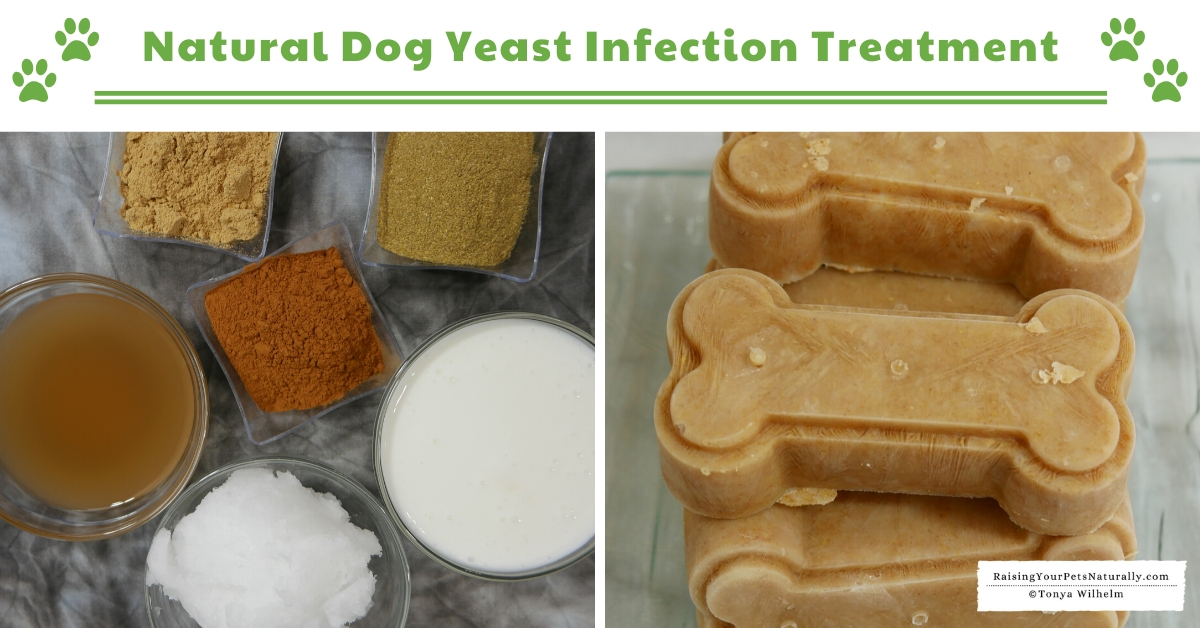
Boy. I wish I had a dog yeast infection home remedy that was 100% successful. Yeast typically is dark red or brown in color and can have a stinky, “Frito” smell. Dexter has been fighting yeast overgrowth ever since he started medications for his Chiari Malformation and Syringomyelia. Believe me, I would like nothing better to not have to give Dexter pharmaceuticals, but the fact is, he would be in terrible pain if I did.
Since Dexter isn’t the only dog out there prone to dog yeast infections, I thought I would discuss the common reasons a dog may develop an excess of yeast and some ways you can help treat your dog’s yeast infection at home.
First, set an appointment up with your dog’s veterinarian to determine if your dog has a yeast or bacteria overgrowth. Your dog’s vet will take a sample and perform a cytology test to determine if it is indeed yeast or bacteria.
Both yeast and bacteria love to grow in dark, warm, moist environments. They feed off of sugar. These two points are important to know when you start to try to eliminate the overgrowth. To reduce yeast, you will want to have a dry environment void of sugar.
Foods That Contribute to Yeast
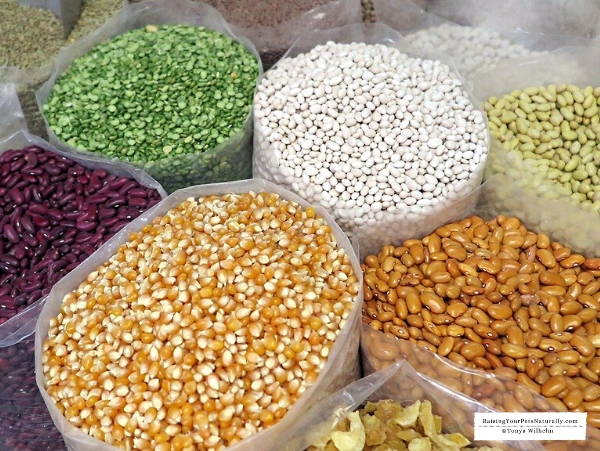
Sugar! Yeast feeds on sugar. But, sugar comes in more forms than the white stuff you may add to your coffee. Carbohydrates break down to sugar. Therefore, diets high in carbohydrates will feed yeast. Not only does your carnivore not need starchy carbohydrates, but it could also be contributing to your dog’s yeast infection. Kibble=HIGH carbohydrates. Some common foods that are high in carbohydrates are potatoes, grains, legumes, corn, high-fructose corn syrup, honey, molasses, and peas. Those are just a few examples.
Foods that are high in natural sugars can also contribute to a dog’s yeasty face, feet, or ears. If your dog is fighting yeast, I would avoid giving him bananas, mangoes, figs and dates. Sorry, Dexter, no more bananas for you. Just a note. The fruits above are healthy options for most dogs in moderation, but I would avoid them if you are trying to eliminate yeast.
Food and Environment Allergies
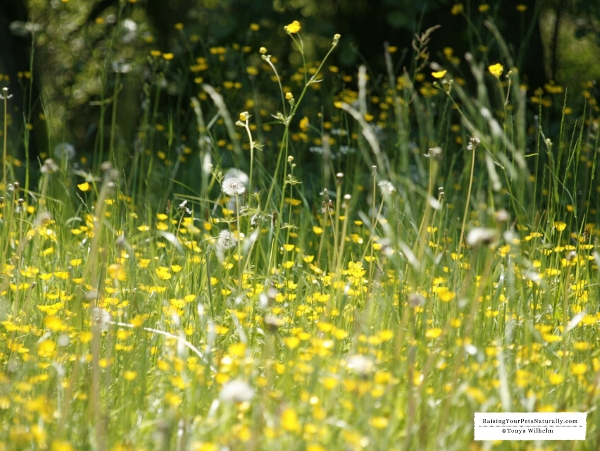
For Dexter, I’ve narrowed it down that he does not have any food intolerances. He does, however, suffer from seasonal allergies. I know this more from his scratching than his yeasty face. When they start, he starts to scratch his belly, and the yeast grows more. I try to combat this by wiping down his body with this DIY wipe after each outside adventure. This year I also started walking him in his dog boots.
Yeast infections often occur in dogs due to a food allergy. I would suggest speaking with your holistic veterinarian to rule out any food allergies. They will likely recommend starting your dog on a novel protein such as rabbit, and slowly adding in foods to see if he has any triggers.
Foods and Herbs That Help Fight Yeast
First thing first. If your dog is fighting yeasty ears, feet, face, belly, etc., a fresh diet is always best. Meat is king. Drop the foods that feed yeast. You can add in foods that are naturally antifungal such as coconut oil, turmeric, garlic, apple cider vinegar, cinnamon, ginger, and Oregon grape root powder.
Support Your Dog’s Gut
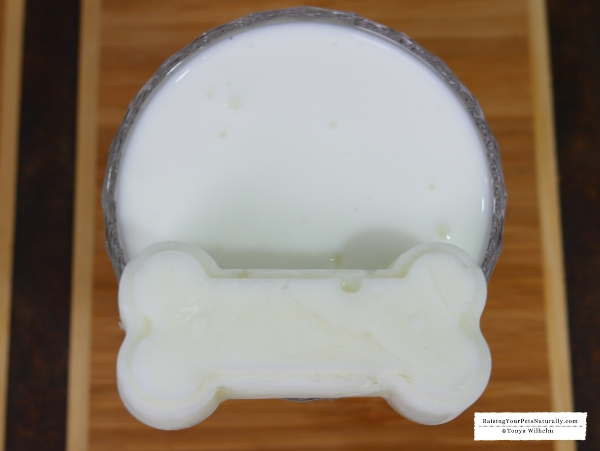
Good gut health is never a bad thing. 
Kefir contains many good-guy bacteria that actually feed on sugar, which will reduce the sugar from your dog’s gut. That said, some kefir will trigger people’s candida (a type of yeast). The same holds true for fermented foods. This is why some people will recommend kefir and fermented foods, while others say no. The choice is yours.
Your Dog’s Immune System
This is where I believe the yeast grows for Dexter. As I mentioned earlier, Dexter has Chiari Malformation and Syringomyelia. I believe this is hitting him twofold. One, the disease itself is compromising his immune system. Secondly, his medications are killing off all the good guy bacteria in his gut, and who knows what else they are doing to his body and organs.
I am very proactive with monitoring his organ function and providing him with as many good foods, supplements, and herbs as possible. I can only imagine what he would be like if I did not provide this type of care. This is where our new DIY treat recipe will come into play. But, there is one more thing that I’m doing to help fight Dexter’s yeasty face.
Best Dog Shampoo for Yeast
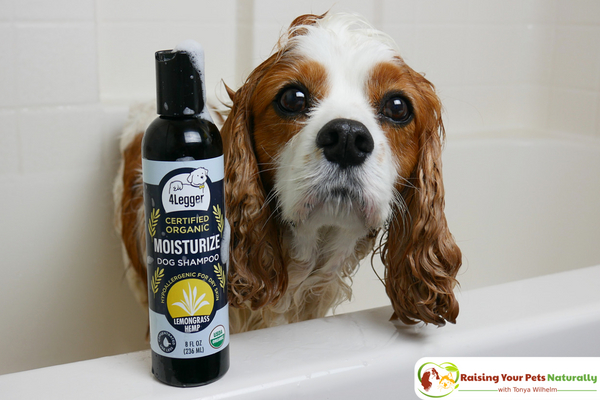
He gets regular wipe downs and baths. He hates it, but he is very tolerant. I have been bathing Dexter with 4-Legger shampoo for many years. You can read all about why in any one of these articles. I particularly reach for their organic tea tree oil with peppermint and their organic hemp with lemongrass. Both of these organic dog shampoos have essential oils that help fight yeast and bacterial infections and offer anti-inflammatory support.
Next, I try to keep Dexter’s face dry. This isn’t an easy task, as he seems to get a wet face every time he takes a drink. Lately, I have been spritzing his face with a distilled water and Yeasty Beast essential oil mix.
Dr. Karen Becker recommends a hydrogen peroxide, white vinegar, and water mix. She does mention that it will lighten a dog’s fur, so be thoughtful if you have a dark dog. I think I’m going to give this a shot, too: 1 cup hydrogen peroxide, 1-4 cups white vinegar to a gallon of water.
Kefir and Coconut Oil Dog Treats
I decided to make a treat recipe to incorporate some of the recommended yeast-fighting foods. These treats will be rotated into Dexter’s meals. They are healthy foods, so I figure they won’t do any harm. I plan on giving him one treat (2 tablespoons) every few days. Dexter is almost 30 lbs.
Ingredients
|
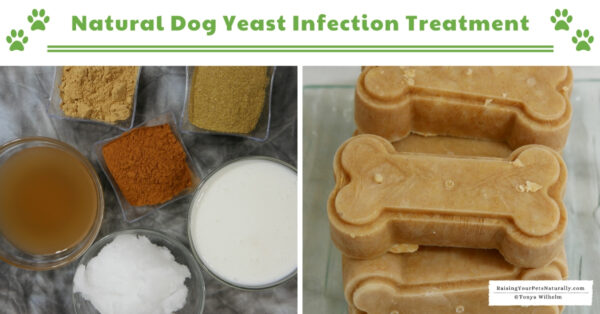
|
- I melted the oil and mixed it all together. As soon as the warm oil hit the cold kefir it got chunky. When I do it again, I will not melt and just blend.
Are you looking for even more ways to stay up to date with Raising Your Pets Naturally? Sign up for the newsletter for more tips and promotions. Don’t forget to be social and Like, Follow and Subscribe. Comments below are always welcome.
Facebook Twitter Pinterest Instagram YouTube
 |
 |
|
|
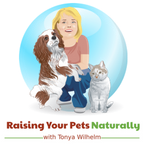





My LuLu has yeast in her feet she’s allergic to corn she eats her feet like a coyote what should I do I know it hurts I put socks on her and soak in salt water
I would start with what is suggested in this blog. If that doesn’t help, I’d go the route of pet food elimination diet- https://raisingyourpetsnaturally.com/pet-food-elimination-diet/